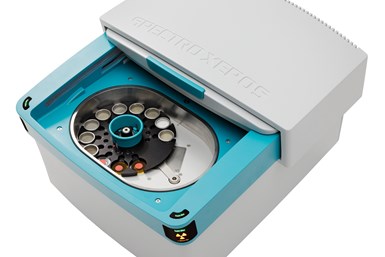Updated ED-XRF Analysis
The latest spectrometers from Spectro Analytical Instruments feature upgrades including improved spectra handling for increased screening method accuracy.

Spectro Analytical Instruments’ XEPOS spectrometers offer energy-dispersive X-ray fluorescence (ED-XRF) technology that often matches that of wavelength-dispersive WD-XRF models, but at a lower cost, according to the company.
The latest spectrometers feature upgrades including improved spectra handling for increased screening method accuracy even for challenging samples emitting complex sample spectra; up to 2x shorter measurement times than the previous model at comparable precision levels; and analyses of many samples can be completed in as little as 1 to 2 minutes.
New capabilities for layer analysis that can now analyze the thickness (down to nanometer scale) and composition of up to eight layers on one substrate, for up to 55 elements. Measurements are simplified, eliminating the need for layer calibration samples. Reference-free analytics are delivered based on solid bulk samples alone.
The latest Spectro XEPOS excels at critical tasks from rapid screening analysis to precise product quality control for at-line processing in applications such as petrochemicals, chemicals, environmental and geological samples, ores/concentrates/tailings, clinkers/cements/slags, cosmetics, foods, pharmaceuticals, and more.
Additional features of the product include a 50 W / 60 kV X-ray tube and adaptive excitation technology to furnish the highest possible sensitivity, optimized to target elements of choice. The instrument's SPECTRO XRF Analyzer Pro operating software provides ease of use, optional pre-calibrated application packages, and power.
The spectrometer’s TurboQuant II software delivers analysis of unknown samples quickly and accurately, analyzing practically any unknown liquid, powder or solid sample, the company says.
Other improvements range from a low-energy window detector to improve routine analyses to updated calibration ranges that match the product’s capabilities to easy calibration transfer from instrument to instrument.
Related Content
-
Mastering Uniformity Through Surface Prep Standardization
By standardizing surface preparation processes and adopting surface energy measurement, a company can achieve uniformity, quality and cost reduction.
-
Titrations: To Automate or Not to Automate?
What considerations should you keep in mind for automatic titrations? Conor McAnespie of Hanna Instruments discusses the benefits of auto titrators.
-
Multi-Functional Coating Test Instruments Operate Like “Swiss Army Knives”
With greater flexibility than limited traditional equipment, modern analytical instruments can ensure reliable coating performance by measuring critical characteristics like friction, peel, wear, and scratch resistance.
















